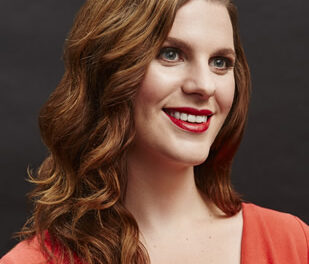As is becoming a more-or-less annual tradition, audience members at Memorial Audiorium in Raleigh were once again transported to the Hogwarts School of Witchcraft and Wizardry, somewhere in England (exact location hidden from us muggles). Instead of the Hogwarts Express, though, the entity to credit for this journey was the North Carolina Symphony. The past two-ish years have enjoyed live performances of the first two installments of the Harry Potter films, and this year it was time for film three: Harry Potter and the Prisoner of Azkaban. The timelessness and popularity of the movie (and the entire series) belies the fact that this particular film was created 15 years ago! Audience members old and young showed out for this performance, some decked out in wizard robes or the colors of their favorite Hogwarts house.
The third Harry Potter film (some would regard it as the best one) has everything – plot twists galore, magical beasts, time travel, humor, verdant scenery, and even some (very) slight hints of budding romance. All of this is illustrated seamlessly by John Williams‘ lush score, and thus, the NCS. Led by charismatic conductor John Jesensky and assisted by voices of the NC Opera Chorus, the orchestra brought to life everything listed above and then some.
Among the joys of Williams’ writing are his gorgeous and memorable themes. There is, of course, “Hedwig’s Theme,” which over time has come to exemplify the series as a whole. As nearly always in the films, it is first played by an eerie, soft celesta, then joined by whirling string patterns as the melody is taken over by brass and woodwinds. This theme was particularly wonderful when held in the bassoon. Also introduced in this film is a theme appearing during important, ponderous conversations called “A Window to the Past” and played by a distinct woodsy Baroque recorder. The orchestra’s live performance made these connections much more noticeable. Something else a repeat watcher might have previously missed is the presence of ticking during nearly the entire time-turner scene (“Forward to Time Past”). Of course, this made Jesensky’s job more difficult, making even a millisecond of difference in timing apparent. Thankfully he and the orchestra were up for this task, matching the music perfectly, especially in the scene when Harry and Hermione reunite with their past/present selves.
There is a surprising amount of vocal music in this score, an amount one might not realize until the singers are out right in front! Members of the NC Opera Chorus caroled the lilting piece “Double Trouble” (performed by the Hogwarts chorus onscreen), which takes its lyrics from Shakespeare’s Macbeth. This appeared again in the credits. Other times, the chorus blended expertly with the orchestra but proved to be a necessary addition to portray the Patronus charm. This was true especially with Harry’s final and most successful casting of a Patronus to save himself and Sirius, a powerful moment both musically and visually. Iridescent treble clusters in the chorus mixed well with the brass section here, creating a beautiful effect.
There are so many nuances that can be pinpointed in a live performance of a film score. You get to see the wavering bows of the violins playing spooky dementor sounds, and you can feel firsthand the joy of hippogriff flight. Plus, it’s fun to experience a film in a large crowd (especially one that’s been out of movie theaters since before some audience members were born). The audience booed the villainous Aunt Marge and Draco Malfoy and likewise cheered when they were blown up like a balloon and punched by Hermione. Music at both the film’s intermission and ending were met with thunderous applause. The date for the live performance of the fourth film, Harry Potter and the Goblet of Fire, has not been announce yet, but stay tuned to your subscription to The Daily Prophet.
This program repeats Saturday, April 27. See our sidebar for details.











